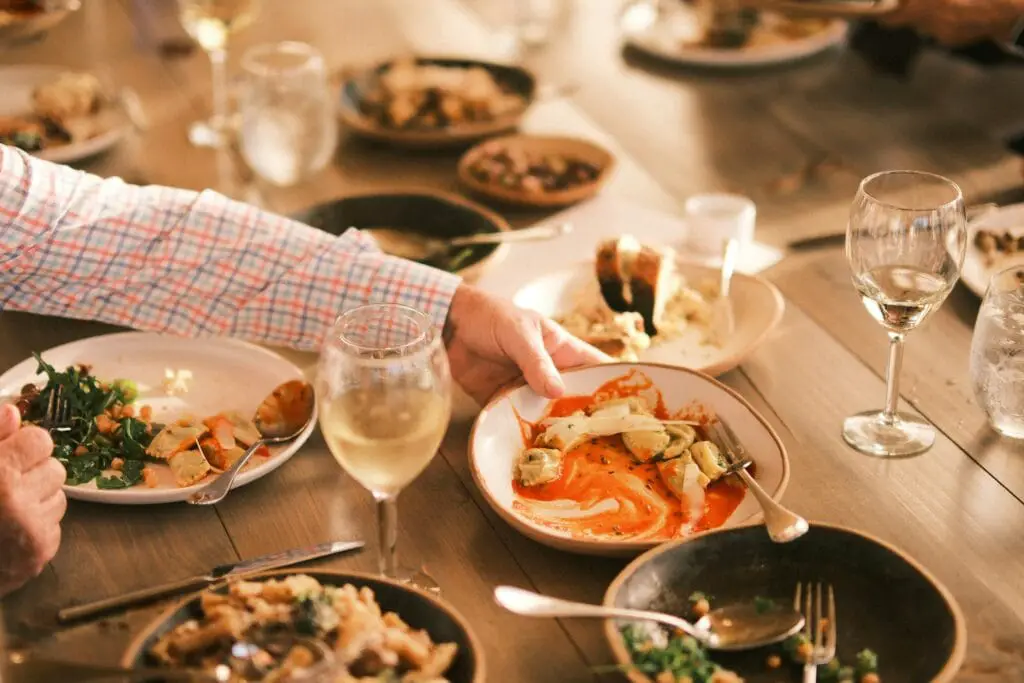Dining etiquette and food customs matter in nearly every culture, but the rules can shift wildly depending on where you find yourself. Knowing what’s polite, like when to start eating or how to hold your utensils, really helps visitors avoid awkward moments and settle in a bit faster.
Understanding the basics of dining etiquette smooths out meals and shows respect for local traditions.
Every country has its own quirks about food and eating together. In India, eating with your left hand is a no-go, while in Italy, folks rarely drink milky coffee after morning and wouldn’t dream of cutting their pasta at a restaurant.
Knowing these customs makes meals more enjoyable and helps you connect with people. Even picking up a few simple habits can make social or formal dining way less stressful.
Key Takeaways
- Good manners make meals more comfortable for everyone.
- Noticing local customs and using utensils properly shows you care.
- Confidence grows when you know a few tips for different dining situations.
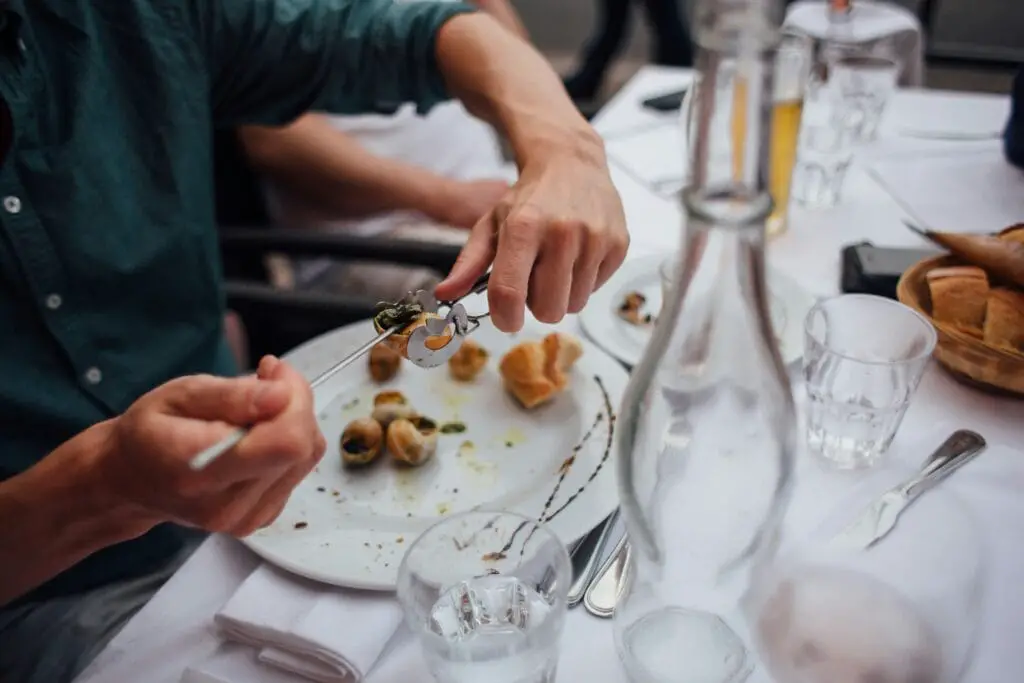
Fundamental Principles of Dining Etiquette
Dining etiquette boils down to respect, attentiveness, and basic good manners. These habits help everyone at the table feel at ease, no matter where you are in the world.
Essential Table Manners
Table manners are the backbone of dining etiquette. Wait until everyone’s served before you dig in.
Keep your napkin on your lap and use it gently, don’t wipe your face like you’re washing a car. Sit up straight, and keep elbows off the table while eating. Chew with your mouth closed, and skip talking with food in your mouth. Small bites, always a good idea.
Utensils usually go from the outside in. Keep a hand free; if you’re standing, hold your drink in your left hand so the right’s open for handshakes (a tip from Kent State University). Don’t reach across people, just ask for things to be passed.
Thank the host, and wait until the meal is over and everyone’s ready before leaving. These habits keep things comfortable and polite.
Etiquette Rules Across Cultures
Cultural customs shape how meals unfold. In India, eating with your left hand is frowned upon. In Italy, cutting pasta or drinking milky coffee after breakfast, not a great look.
Some places, like parts of the Middle East and Asia, see burping at the table as a compliment, while others don’t. East Asia leans on chopsticks, and in many European countries, you’re expected to wait for a toast before sipping your drink.
Respecting local customs shows openness. Picking up a few dining etiquette traditions goes a long way when traveling or hosting international guests.
The Role of Hospitality
Hospitality means making guests feel welcome at your table. A good host offers drinks, serves food in the right order, and checks in on guests’ needs.
Hosts might introduce guests who don’t know each other. They’ll notice dietary restrictions and try to accommodate. Conversation should stay pleasant and include everyone, no need to dominate or dive into hot topics.
Guests should show appreciation. Thank the host, and accept a reasonable amount of what’s offered. Respectful behavior reflects well on everyone and helps build better relationships at the table.
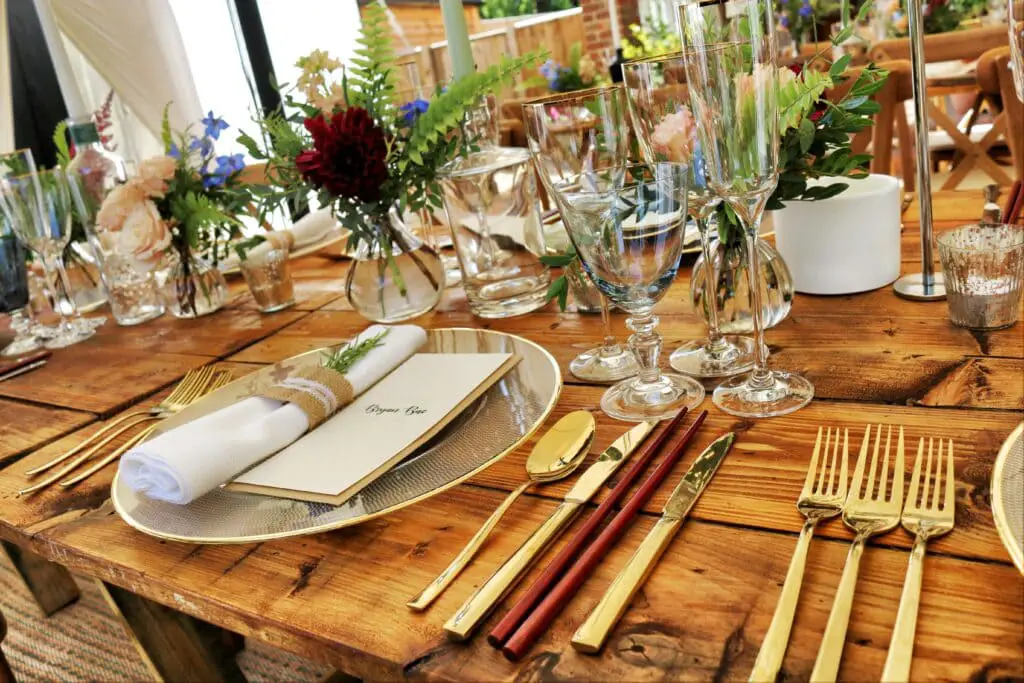
Using Utensils and Cutlery
Table manners start with knowing how to use forks, knives, spoons, and chopsticks around the world. Using cutlery properly shows respect and helps you feel more at ease during meals.
Continental Style and American Dining Etiquette
In the continental style, people hold the fork in the left hand and the knife in the right, cutting and eating without switching hands. The fork’s tines face down, and this is common in much of Europe.
Some cultures want both hands above the table, but elbows stay off. American dining etiquette uses the ‘zig-zag’ style: cut with the knife in the right hand, then switch the fork to the right to eat, tines up. The free hand can rest in your lap.
Don’t hold utensils in a fist or wave them around while talking. Let utensils rest on your plate, not the table, when you’re not using them. If you want to dig deeper, check out this overview on eating customs and etiquette.
Chopsticks: Proper Use and Customs
Chopsticks are the go-to in China, Japan, Korea, and Vietnam. Hold one chopstick steady with your thumb and index finger, and move the other with your middle finger. Never stab food with them or wave them in the air.
Don’t leave chopsticks sticking upright in a bowl of rice, it’s linked to funerals. Avoid passing food from chopstick to chopstick, too, since that’s part of cremation rituals. Use serving chopsticks for shared dishes.
Some spots offer chopstick rests. Place chopsticks parallel on the rest or across your bowl, not on the table. For more details, here’s a guide to dining etiquette in different cultures.
Understanding Cutlery Placement
Formal Western dinners have a system: utensils are arranged in the order you’ll use them, from outside in. Forks go left, knives and spoons to the right. The knife blade faces the plate.
If you pause during a meal, rest your knife and fork in an inverted V shape on your plate. When you’re done, place them parallel, usually at four o’clock. That’s the signal for servers that you’re finished.
Never put used cutlery back on the table. Plates, not the tablecloth, are for resting utensils. Following these basics helps you avoid social slip-ups and shows respect for everyone at the table. For more, see the guide to formal dining etiquette.
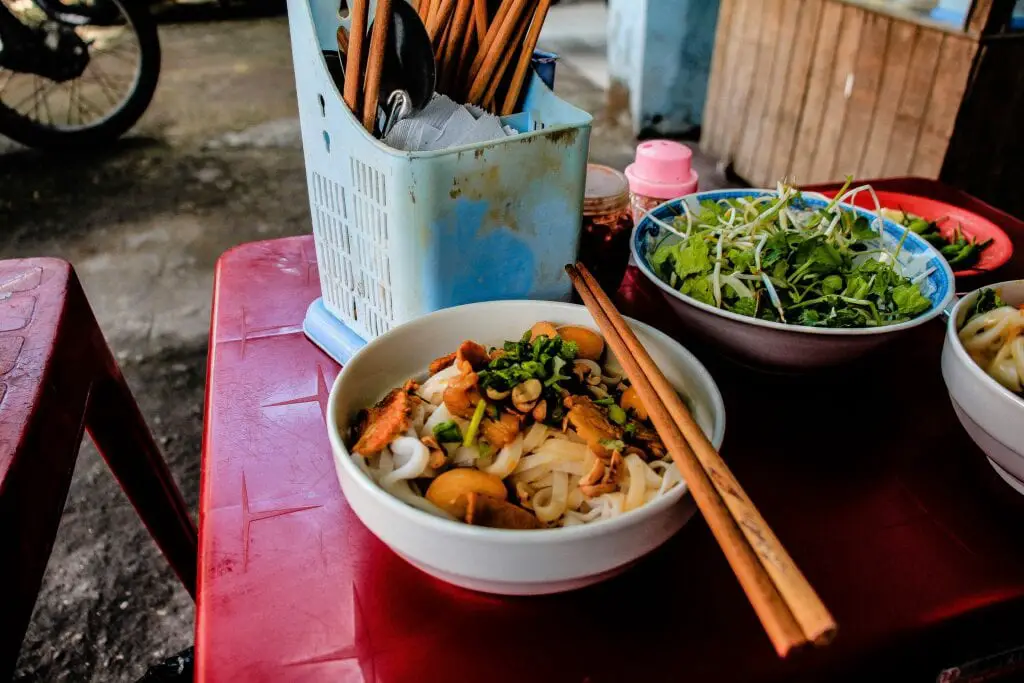
Cultural Tips for International Dining
Each region has its own traditions around food and mealtime behavior. Understanding these helps travelers avoid awkward moments and show respect.
Dining Practices in Asia
In Asia, how you eat can be just as important as what you eat. In Japan, bring the rice bowl to your mouth and use chopsticks, but again never stick them upright in your rice, it’s a funeral thing.
Slurping noodles is fine, actually, it shows you’re enjoying the meal. In China, dishes are shared at the center of the table. Don’t point chopsticks at people or spear your food. In South Korea, elders eat first, and everyone waits for them to start. Passing dishes with both hands is polite in many Asian countries.
Leaving a bit of food on your plate in China can signal you’re full, but sometimes finishing everything shows appreciation. Watch what locals do. Loud eating isn’t rude in Japan; slurping soup or noodles is encouraged. For more tips, check international dining rules in Asia.
Caribbean Dining Customs
Caribbean food culture is all about family and community. Meals may kick off with a prayer or moment of thanks, showing togetherness. Formal gatherings start on time, but casual ones can be a little more relaxed.
Sharing’s the norm, big dishes go in the middle for everyone. If you’re offered seconds, it’s polite to take a little, even if you’re full. Conversation and laughter are welcome, but don’t interrupt or talk with your mouth full.
Dress codes can change depending on the occasion, but clean, neat clothes are always safe. Greet elders and hosts before sitting down. Seating might be loose, sometimes by age or status. Be open to trying new foods, refusing can seem rude.
Respecting the Right Hand in Eating
In the Middle East, India, and parts of Africa and Southeast Asia, the right hand is for eating, whether you use utensils or not. The left hand is considered unclean and shouldn’t touch food or communal dishes.
Even passing things with your left hand is avoided. If you’re not used to eating with your right hand, it helps to practice before visiting these places. Hosts may see left-hand use as disrespectful. For more, see this look at dining etiquette from around the world. Paying attention to this detail really helps guests make a good impression.
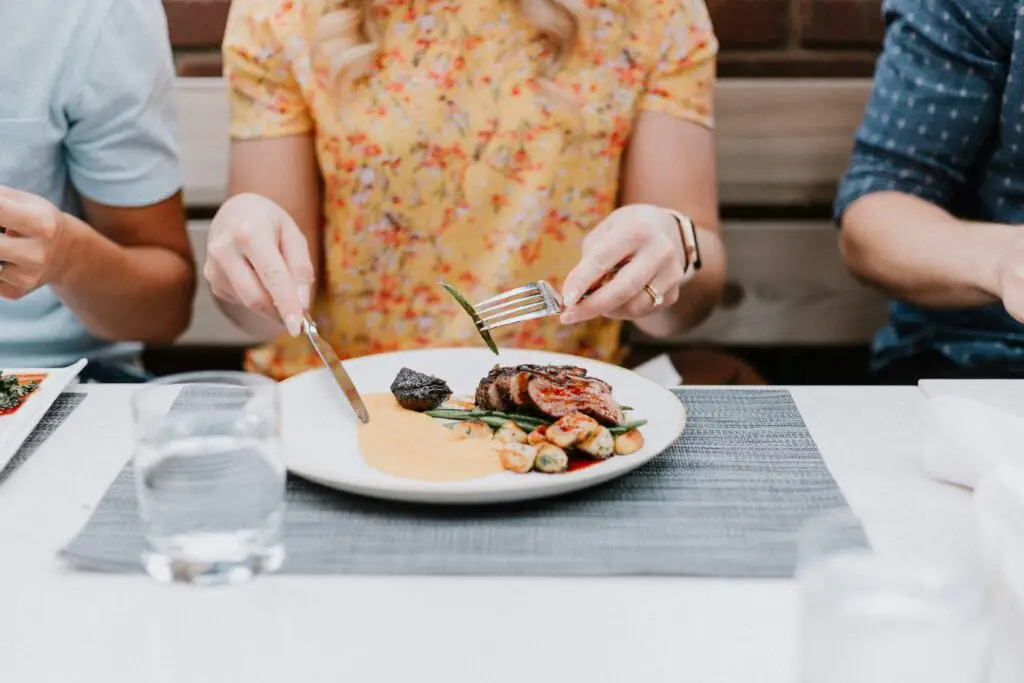
Proper Posture and Seating Behavior
The way you sit and act at the table says a lot about your respect for others. Good posture keeps everyone comfortable and the table looking tidy.
Posture at the Dining Table
Sit upright, back straight, feet flat on the floor. Keep shoulders relaxed, don’t slouch.
Elbows stay off the table unless you’re between courses or not eating. Hands can rest on your lap or lightly on the table’s edge.
If you need something, sit up straight and ask for it to be passed instead of reaching over. Gentle, controlled movements keep things tidy and avoid bumping others. These habits are a core part of dining etiquette.
Polite Seating Arrangements
Seating order matters in both formal and casual settings. In some cultures, the oldest or most important person sits at the head of the table.
Others might wait for that person to begin eating before starting themselves. Where you sit often depends on the host’s instructions, so it’s best to pay attention.
Chair placement affects posture and etiquette. Approach the table calmly, pull out your chair, and sit down gently, no harsh scraping or sudden plopping, please.
If there’s a napkin on the chair or place setting, put it on your lap right after sitting. That’s the usual move in most places.
If you need to leave the table during a meal, go quietly. Leave your napkin on the chair or to the left of your plate if you’re coming back.
These steps help everyone feel comfortable and respected at the table. Following them is a key part of proper table manners.

Navigating Social and Formal Occasions
Social and formal dining usually comes with clear expectations. Following proper etiquette shows respect and helps create a welcoming atmosphere for everyone.
Invitations and Host Responsibilities
In formal settings, invitations are often written and sent ahead of time. They’ll usually include the date, time, place, dress code, and RSVP instructions.
Guests should respond promptly and follow any requested steps. The host greets each guest and tries to help them feel comfortable, maybe by showing them to their seats or explaining the meal.
The meal usually doesn’t start until everyone’s seated. Often, the host kicks things off with a quick speech or simple welcome.
If you can’t attend, let the host know as soon as you can. Hosts often check for special dietary needs ahead of time.
At business or formal events, seating order and service may reflect seniority or guest importance. Knowing these customs helps guests avoid confusion and embarrassment. For more on dining etiquette in formal settings, expert guides are available.
Gift Giving and Thanking Traditions
Bringing a small gift is a common tradition when invited to someone’s home for a meal. Wine, dessert, or flowers usually work well.
Some cultures expect gifts, while others don’t. It’s best to steer clear of sharp objects or personal care items, since those can have negative meanings in some places.
In several countries, presenting the gift with both hands shows respect. After the meal, sending a handwritten thank you note, an email, or a message is thoughtful.
A quick phone call works too. If you’re unsure about customs, just watch what others do or ask. For more on cultural differences, check this guide on international gift giving and thank you customs.
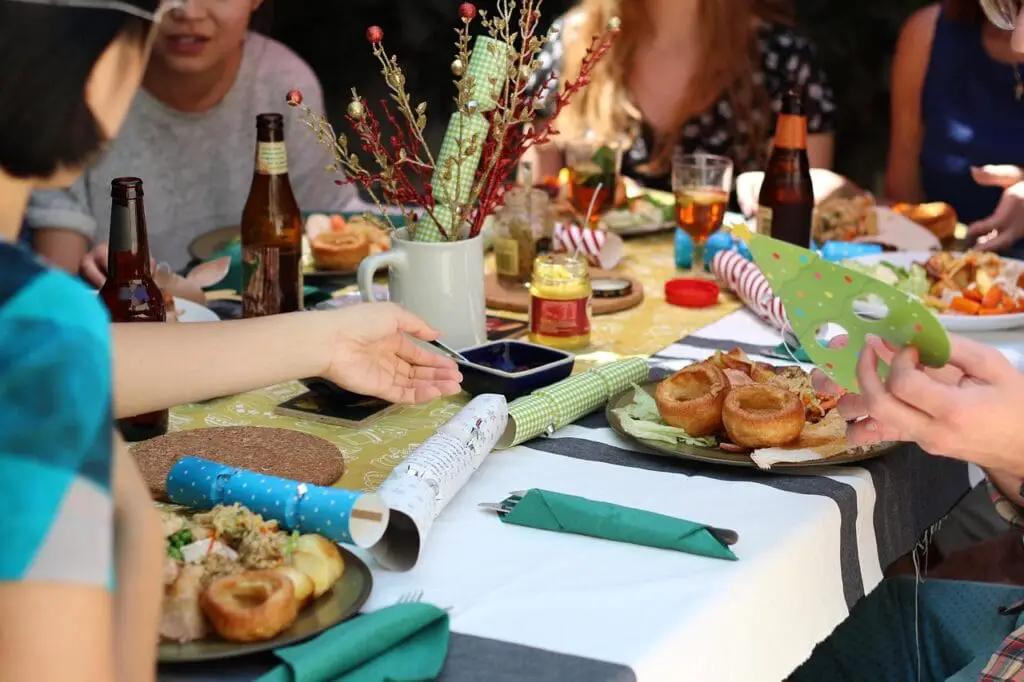
Frequently Asked Questions
Table manners and food customs change from place to place. Respecting local traditions can leave a good impression and help you avoid awkward moments during meals.
What are the essential table manners to follow in various cultures?
In the United States, people usually cut food with the right hand and switch hands to eat. In India, most meals are eaten with the right hand, since the left is seen as unclean.
In Europe, diners often keep the fork in the left hand and knife in the right. Details can vary, even between neighboring countries.
How do dining customs vary from one culture to another?
Customs can be surprisingly different. In Japan, slurping noodles is a compliment to the chef, but in some Western countries, it’s considered rude.
In China, leaving a bit of food on the plate can show you’re satisfied. In other places, finishing all your food is polite.
Which dining etiquette rules are considered universal?
Most cultures expect people to chew with their mouths closed and not talk with food in their mouths. Washing hands before eating is common almost everywhere.
Showing respect to other diners and waiting for everyone to be served before starting a meal are usually recognized in most places.
Can you provide examples of unique food customs from different regions?
In India, people often use roti or rice with the right hand to pick up food, skipping utensils for many dishes. In the Middle East, sharing food from communal plates is standard.
In France, you’re expected to keep your hands above the table (but not on your lap) during meals. More examples are over at cultural dining etiquette.
What are the top dos and don’ts of dining etiquette?
Do pay attention to body language and follow the host’s lead. Don’t start eating before everyone’s been served.
Keep conversation polite and light at the table. And don’t reach across other diners for food, just ask for it to be passed.
Why is understanding table etiquette important in cross-cultural interactions?
Knowing table manners shows respect for others. It helps you steer clear of awkward moments or misunderstandings.
This kind of awareness can build trust, especially at business dinners or formal events. It also sends a clear message: you care about your hosts and their culture.
You Might Also Like:
If you enjoyed this post on Must-Know Dining Customs Around the World: Avoid Embarrassing Mistakes, you might also like: 10 of the World’s Most Beautiful Places, Explore the World in Style: Best Luxury Travel Spots and Experiences, Want to Work Overseas? Discover the Best Countries for Jobs and Rich Culture.
